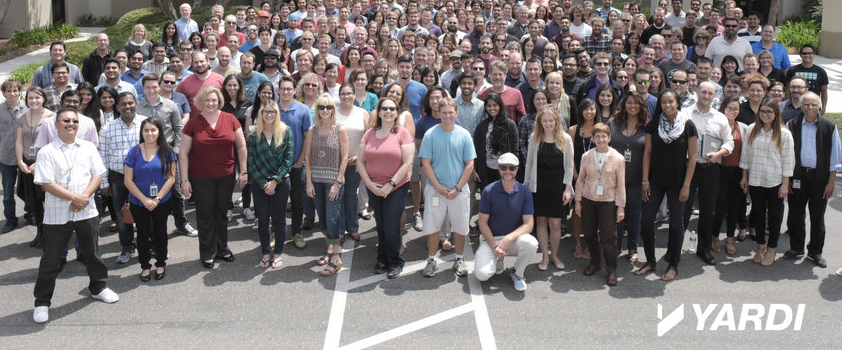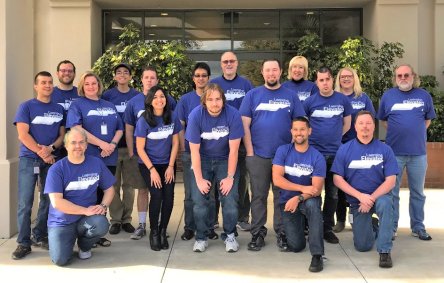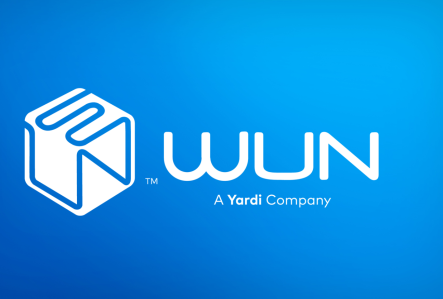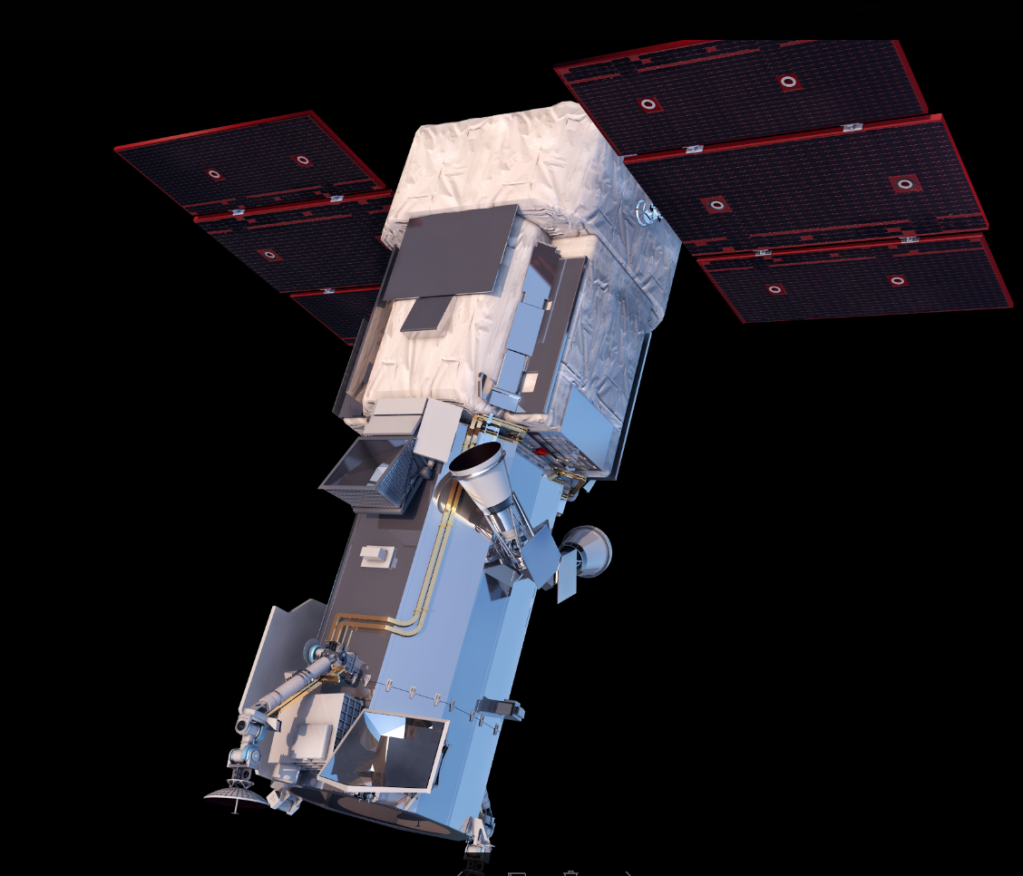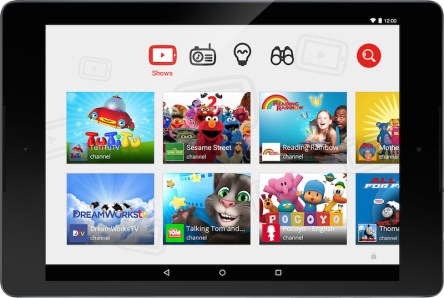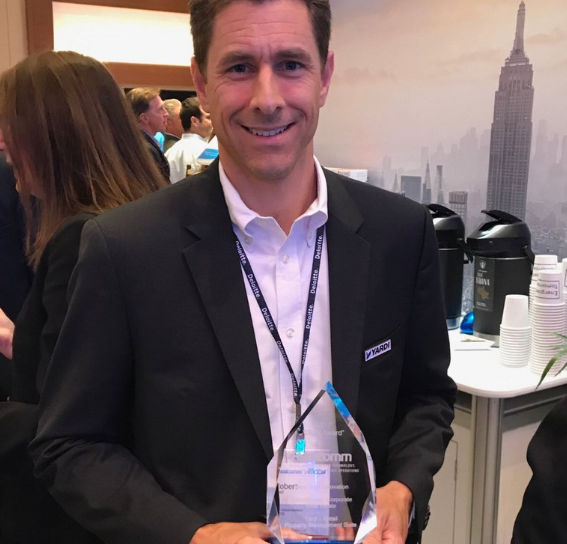It’s an exciting time for the condo industry in Canada. Facing tech disruption, new building, increasing regulation and competition, condo companies need to rethink — and even reinvent — the way they do business. To improve operational performance and increase NOI, condo managers need software platforms that deliver actionable analytics and integrated online services. A Market on the Move As revealed in the PWC Emerging Trends in Real Estate 2018 report, the condo sector in Canada is seeing steady demand in most markets. In downtown core areas, condo units remain attractive to young professionals with a live/work/play lifestyle, along with retiring baby boomers who are downsizing from single family residences to enjoy urban amenities. The condo industry is also evolving in response to new needs and pressures. Whether there isn’t enough supply to meet demand or oversupply is finally being absorbed, condo managers need a profitable strategy that suits every scenario — including new projects such as popular multiuse communities that are driving density in city centers. These trendy new communities combine a mix of condo units with retail, a range of services and commercial space. Beyond the concept of mixed use, these “developments-as-neighborhoods” recognize the demand for a community infrastructure that includes schools, parks, shopping and medical services that consider needs of young professionals, young families and older residents, too. According the PWC report, “The age of the shrinking condo may be coming to an end: units are starting to get bigger, reflecting the needs of families and move-up buyers.” Tip #1: Go Paperless and Save To be more agile in a changing market and transform operations to be more profitable, you have to say goodbye to paper. By streamlining invoice processing and centralizing spend management with automated online approval workflows, you ensure...
Intel’s Vaunt Glasses...
Another look at smart eyewear
If you lived through the Google Glass launch and decided that smartglasses are not a device you would use every day, you might consider changing your mind. Intel’s development team has been busy and has something new to share. In an exclusive arrangement with The Verge, Intel showcased the new Vaunt gadget, a piece of tech that doesn’t scream at you ‘tech.’ They’re probably the closest thing to regular pair of eyeglasses and come in several styles, work with prescriptions and can be worn all day long without having your nose or ears get numb. Intel’s New Design Group (NDG) boast a simple interface, minimal design and a non-intrusive notification system, just the features to make the world have a second look and maybe bring the smart eyewear to the mainstream. Weighing almost 1.8 ounces (50 grams), the Vaunt glasses have plastic frames, which make lighter than most of the smart glasses and AR headsets out there, and most importantly, they feel like a regular pair of specs. At a first glance, nothing ‘smart’ really stands out—there are no visible camera, buttons or touch controls—which is ironically a plus. Intel learned from its predecessor (Google) that these elements are driving people away. The Vaunt’s technology is made by Intel, as are the chips and application processor. At the moment, the smartglasses are designed only to display notifications and basic information directly into the user’s eyes. Think text messages, recipes and directions, but following the launch, developers will come up with new apps serving various purposes. Let’s get back to the ‘directly into the user’s eyes’ part—Vaunt works by the means of a Vertical Cavity Surface Emitting Laser (VSCEL) to project information onto a reflector onto a reflector on the right lens, which in turn...
2018 Wearable Tech
The Latest and Greatest
At the beginning there were fitness wearables. They slowly transgressed into fashionable wearables and now can be seen in many industries. These days, the tiny devices, once strapped around the wrist, can be found all over one’s body, including on your fingernails. “We’re seeing lots of not obvious usage scenarios, but once you start to really think about it, it makes perfect sense,” Brian Blau, research vice president for personal technologies at market research firm Gartner, said in an interview from CES. Here’s a list with some of the most interesting ones out there: L’Oréal UV Sense Among the smallest wearables out there, L’Oréal’s UV Sense is a UV sensor that sticks to your fingernail. It comes with replaceable adhesives, but one can easily stick it to other items, like your watch or sunglasses. Thanks to its NFC feature, in order to access the data it collects, scanning it with the phone is all that’s needed. As you probably guessed, it helps people track how much time people spend in the sun without being overbearing. UV Sense will determine how long you’ve been out in the sun and once synced with your app, displays a score that shows if you’ve spent too much time under the sun’s powerful rays. Because everyone can handle different amounts of sun, the app will ask some initial questions about your skintone to set a baseline. In addition, it can also recommend products based off your skin score. LIZN Hearpieces Another medical aid presented at CES comes from Danish company LIZN. By mixing advanced hearing aid technology and cell phone components, the company built a product worthy to be named a CES Innovation Awards Honoree this year in Las Vegas. The earbuds, equipped with Bluetooth compatibility (great for listening...
Aiding the Blind
tech for vision loss
More than 250 million people lack the gift of sight. While for the most of us even imagining what it is like to live in complete darkness is impossible, some have found a way to make a commitment that’s truly amazing—to end vision loss by 2020. Luckily, we live in the era of wearable technology. eSight originates in Toronto, Canada, where one successful engineer—Conrad Lewis— with two legally blind sisters, wanted to use his skills to come up with a solution to their blindness. It took him seven years and investments of tens of millions of dollars to develop the technology and in 2013, managed to release two beta versions of the glasses that would revolutionize the world of the legally blind. In 2017, the company launched eSight 3, a much sleeker and lighter version of the headset, which also has improved battery life and image quality. How does it work? The gadget is equipped with two depth sensors and a high speed, high resolution camera positioned in the middle of the eSight glasses that captures whatever it is that the user is looking at in real time. It also has a powerful computer, which instantly processes the high definition video and displays it on two OLED screens in front of the user’s eyes, using specific optics. The gizmo’s proprietary algorithms enhance the video feed, which offers clarity without perceptible latency or delay. This allows the user to auto-focus between short-range vision to long-range vision. A special feature—the patented Bioptic Tilt capability—enables users to adjust the eyewear to the precise position they choose and also maximize the outer peripheral vision, which people with low vision still have functional. The feature, combined with imperceptible short latency, keeps the user’s balance in check, thus no nausea...
Digital Definition
Transformative CRE Tech
What does “digital transformation” mean to commercial property management beyond a catchphrase? Six thought leaders including Alex Stanton, Yardi’s commercial industry principal, provided clarity on the subject in a recent Realcomm-hosted webinar. Digital transformation extends technology beyond acquiring and managing property. It’s driven by business factors such as profitability, occupant satisfaction and productivity along with new technologies including the cloud, data analytics and the Internet of Things. Digital transformation is “a strategy lever to achieve broader business agendas and create new levels of value,” according to panelist Marc Petock, chief communications officer and vice president of marketing for IoT technology builder Lynxspring. Digital transformation aggregates business, operations and IT practices into a common platform for people, processes, best practices and services, Petock said, with new technology embraced not for its own sake but to change thought and organizational culture. Executed properly, digital transformation can foster better resource planning, empowerment, technology collaboration and risk mitigation. With heating, ventilation and air conditioning equipment comprising a major expense, for example, commercial building owners and operators are incentivized to adopt intelligent building technology that provides new insight into operations and equipment performance. Commercial real estate has traditionally been slow to adopt transformative technology; when the panelists were asked how much of the industry understands digital transformation, no estimate exceeded 30 percent. But that’s changing in the face of pressures for profits, high sustainability expectations and consumers’ technology sophistication. “Technology used to mean ‘support’; now it’s at the forefront of driving revenue and services,” said Sandy Jacolow, chief information officer for real estate developer, investor and manager Silverstein Properties. “It has shifted how we do business. For example, mobile capability is no longer a luxury; tenants say ‘Is there an app for that?’ A poor interface or customer experience...
A New Look
For Dell's XPS 13 Laptop
Just before CES 2018, Dell unveiled its new XPS 13 laptop. The device, favorited by many thanks to its compact design, bright display, comfortable keyboard and decent battery life, has been completely overhauled, boasting narrower bezels, a new cooling system and a white option with a stain-resistant coating. The device had been revealed at CES 2012 and counts now seven versions, the very last one featuring a new white-and-gold finish, a slimmer frame, eighth generation Intel CPUs and other upgrades. Design wise, the latest version marks the first tangible design changes since its original launch. Dell slimmed down the XPS 13 chassis to be 30 percent thinner at just 0.3 inches (3.4mm) at its narrowest point, but also lighter at nearly 2.7 pounds (1.2kg). Obviously, the color change is the most notable modification, even though the original black and silver configuration is still available. The white and rose model features a woven glass palm rest that has a slight texture to it, unlike the black model’s smooth palm rest. According to the company, it is finished with a titanium oxide coating for shine, and the anti-stain coating that should protect the palm rest from turning yellow. There are three USB-C ports (two of which are Thunderbolt 3), a microSD card reader and a 3.5mm audio jack. One strange thing about the XPS 13 is the webcam placement—at the bottom of the screen instead of above it—but this is not something new. The camera can be used to log into the computer using face recognition if the fingerprint scanner feels ancient. The device will be available with an FHD non-touch or 4K touch display, while inside it comes equipped with 8th generation quad-core Intel Core i5 and i7 CPUs, Intel Graphics 620, support for up...
Social Housing
Overcoming Tech Challenges
Peter Altobelli, vice president and general manager at Yardi Canada Ltd. and Sean Bremner, maintenance director at Baptist Housing, presented a session on Social Housing Technology to a packed room at Housing Central. The conference was held in Richmond, BC and hosted by the British Columbia Non-Profit Housing Association. During the presentation, Altobelli and Bremner explored how technology can improve organizational management and generate cost savings with high returns on investment. The presentation also gave attendees advice in preparation for change as they implement new technology. As vice president of a software provider that works with social housing organizations across Canada, Altobelli provided insight into the latest technology geared for non-profit housing managers. “The crucial value-adds that an organization will realize with the use of technology are automating tasks, improving the user experience with better tools to increase productivity, and simplifying staff management,” said Altobelli. Altobelli spoke about how automated processes are most effective when based in the cloud and optimized for multiple web browsers, including tablets and smartphones. Putting those solutions in the cloud makes it easier to create effective access for tenants and prospects, property and financial management and maintenance management. “When you are able to access accounting, budgeting, inspections, maintenance, energy and resident management data all on one system, it enables increased productivity for your entire team,” Altobelli said. Bremner presented a case study of how his organization, Baptist Housing, overcame internal challenges with technology. Focusing on maintenance workflows, Bremner described how former processes that required manual, handwritten notes often omitted relevant details, made it difficult to access active maintenance requests, created scheduling challenges and limited the capability of Baptist Housing to report on current and past maintenance requests. “We adopted a cloud-based software solution that drastically changed our maintenance program....
2018 Tech Trends
Innovation Ahead
With 2017 drawing to a close, we’ve been thinking about the future. The current year’s tech trends have been big and impactful, with artificial intelligence topping the charts. How about 2018? Most likely, technology is set to focus on the internet of things (IoT), artificial intelligence and machine learning. The Internet of Things Pretty much everyone has heard about IoT as it can be found in almost any industry now. You must have noticed that everything is becoming ‘smart’. In your car, at home, in the office, or shopping—there’s smart technology everywhere, ready to collect data and connect to other devices in order to assist you with your tasks. Gartner states that by 2020, a quarter of a billion cars will be hooked up to the internet. No doubt the trend will continue to progress in 2018 and even expand to areas outside of those mentioned above. Artificial Intelligence Pretty much anywhere you look—tech conferences, development and discussions, AI is at the forefront. And rightly so as it’s no easy thing to have computers able to learn in much the same way as humans do. Behind its extraordinary advancement is the incredible explosion in data—the more data an AI system has, the faster it can learn and the more accurate it becomes. It seems like humanity is on a path without a return alley. Machine Learning This technology has already swept every platform into its net. All developers want to make life and software more intelligent and advanced. It will replace all those mindless, repetitive and time-consuming tasks, precisely what technology should do. We already have some automated processes, decisions, functions and systems, carried out by algorithms or robots. Machine learning is the next step and ever more industries will be impacted by it—truck...
Best Place to Work
New Glassdoor Honor
Echoing the voices of its employees, Yardi has been honored with a major award from Glassdoor as one of the top places to work in the U.S. The 2018 Glassdoor Employees’ Choice Award relies solely on the input of employees, who elect to provide feedback on their jobs, work environments and companies via Glassdoor, a popular job rating and review site. Yardi ranks No. 42 on the list of Top 100 U.S. Large Companies list. But don’t just take our word for it. Read some of the things Yardi employees are saying: “The culture is second to none! Everyone is here to help each other and our clients succeed,” – Sales Team employee review. “What I have found at Yardi is the ability to grow and learn in a supportive environment. I can say that the day-to-day Yardi Culture is something that should be bottled up and sold to other companies.” – Client Services Department employee review. “Yardi is a very charitable company and does a lot of good, which the employees are involved in. You develop a real sense of pride working for such a well-run company that also makes a difference in the world.” – Research Department employee review. “Yardi has an extremely warm and welcoming atmosphere. Everyone goes out of their way to make sure people feel comfortable and included in workplace functions. You can tell they really care about their employees.” – Client Services Department employee review. The Best Places to Work lists were determined using company reviews shared by U.S.-based employees between November 1, 2016 and October 22, 2017. To be considered for the U.S. Large category, a company must have at least 1,000 employees and have received at least 75 ratings across eight workplace attributes from U.S.-based employees during the period of eligibility. The final list is compiled based on Glassdoor’s proprietary algorithm, and considers quantity, quality and consistency of reviews. For the complete list of the Glassdoor Best Places to Work, visit the list. “This is a tremendous honor for our company and reflects the positive experiences of our growing workforce,” said Anant Yardi. “We appreciate the recognition from Glassdoor and thank our employees who took the time to share their thoughts and opinions.” On Glassdoor, current and former employees of companies worldwide can share insights and opinions about their work environments by sharing a company review, designed to capture an authentic inside look at what it’s like to work at particular jobs and companies. “We know today’s job seekers are more informed than ever about where they go to work, researching everything from company culture to career opportunities to pay philosophy and more. To help people find companies that stand out from the pack, the Glassdoor Employees’ Choice Awards recognize employers that are truly Best Places to Work because they’re determined by those who really know best – the employees,” said Robert Hohman, Glassdoor CEO and co-founder. “Employers where employees love to work continue to prove that they have a recruiting and business performance advantage.” This is the second time this year that Yardi has been recognized among the top U.S. companies by Glassdoor. In June, CEO and Founder Anant Yardi was named to Glassdoor’s Highest Rated CEO list. That honor was also based on feedback submitted by current and former Yardi employees. Of 100 CEOs recognized nationally, Anant Yardi ranked No. 32. Yardi is hiring! Find out about current employment opportunities worldwide on our Careers...
Build to Rent
Responding to Proptech
LONDON – Technology has changed all our lives so fundamentally in recent years that it is sometimes difficult to look back to an era when things were done differently. Today’s normality was, just a short time ago, unthinkable. Banking is a good example. Today, we take it for granted that we can access our accounts at any time and transfer money and pay bills quickly and cheaply. The chequebook is still available for those who need it, but it won’t be long before they too are consigned to history. Then take taxis. While in London at least, using a cab was once the preserve of those with substantial salaries – or travelling at somebody else’s expense – now the rise of Uber and others means that getting a ride home is a real option for many people. Property has, of course, been slow to embrace the benefits that digital technology can bring – one estimate is that the industry is around 20 years behind financial services – but that is starting to change and at pace. Just a few years ago, if the property press mentioned technology at all, it was to reference the influence of the likes of Rightmove or Zoopla. Today the phenomenon has its own name: proptech. A lot of attention has been paid to how proptech is disrupting the industry, most notably through big data potentially making the role played by many agents redundant. That is obviously a cause for concern and the introduction of new ways of working will obviously have to be done with care and compassion. But proptech also has the potential to bring huge benefits to both property companies and their consumers – and without the need for anyone to lose their jobs. In no sector...
Watch Out Fido
Aibo is Back
Just in time for the holidays, Sony has resurrected the robot pet it removed from shelves in 2006. This new model is called aibo, which stands for Artificial Intelligence robot. Aibo is also the Japanese word for “companion” or “friend.” The new model (no. ERS-1000) develops from a newborn puppy to an adult with personality shaped by the interaction with its owners and surroundings, thanks to the latest AI technology. This ability to form an emotional bond with members of the family makes each aibo unique, so no two will be the same. The new puppy’s rounded appearance makes it pretty irresistible. Sony has spent quite a bit on animation. That being said, I am personally a bit skeptical about how it feels to pet a piece of plastic, even though it’s premium plastic. The pup has the capacity of expressing its love for its owners through lifelike expressions and a dynamic array of movements, but it does make one wonder—is this the future of pets? The robot pet has a behavioral repertoire more limited than that of the least bright dog, but an aibo doesn’t need you to feed it (technically, it does when you charge it), doesn’t wake you up at 5am to take it out in the pouring rain and will never make a mess inside your home. Aibo’s ‘fur’ is ivory-white, and it has cute flapping black ears and a wagging tail. It’s about 30-centimeters long and comes with a package of sensors on the head, chin and back for pet detection, two cameras, four microphones for voice commands and internet connectivity, as well as the earlier mentioned upgraded AI backed by cloud computing to develop the dog’s personality. The advantages of deep learning and AI tricks help it to...
Largest EV Station
Charging in Germany
Automakers have been hard at work, developing ideas for the cars of the future, but in order for the new vehicles to have a future, a proper infrastructure needs to be designed and put into place. The battery industry is in full swing with more and more scientists getting involved into the development of bigger and better ones, but regardless of their capacity, they all need to be recharged. This means that charging stations need to spring in at least as many locations as the conventional gas stations. Sortimo, a German company headquartered in Berlin, unveiled plans of what’s to become the largest electric vehicle fast-charging station in the world—the Sortimo Innovationspark Zusmarshausen. The project will be located along Germany’s six-lane A8 highway, in the industrial area in Bavarian-Swabia, between Ulm and Augsburg, in close proximity to Tesla’s Supercharger in Jettingen-Scheppach. The electric vehicle (EV) fast-charging station will consist of 144 charging ports, which will allow for more than 4,000 cars to be refilled with energy on a daily basis. Of the planned charging columns, 24 are to be superfast chargers, with a charging capacity of record-breaking 350 kilowatts, meaning that a vehicle battery can be replenished in only a few minutes. Tesla’s ‘Superchargers’ currently stop at about 150 kilowatts, but even though this is more than what today’s car batteries can handle, the company is convinced that both battery capacities and the need for charging infrastructure are growing at a significant pace. Moreover, the Innovationspark will feature offices, shopping and dining areas, serving those who stop to recharge their vehicles. The images accompanying the announcement reveal that the planned station will be topped with green roofs, emphasizing on the development’s care for nature and awareness for the environment. The massive charging station will...
Yardi eLearning
Celebrates 5 Years
Five years ago this month, Yardi eLearning was officially launched to the world. Like every successful software product, there is an interesting back story to Yardi’s online staff training management solution. Did you know that Yardi eLearning was originally conceived as part of a MBA thesis by a Yardi employee? Yves Hajjar came to Yardi in 2011, and at the time was working on his MBA. Read Yves’ story here. Patty Evans, manager of training for Yardi, heard of Yves’ masters project shortly after his arrival at Yardi. The two quickly teamed up and began to design what eventually became Yardi eLearning. “I read the press release announcing a new real estate training service we were offering at Yardi. That announcement inspired me to consider how we could create an online learning platform for our clients and staff. Simultaneously, Yves was pitching his masters project to Yardi management as a potential client-facing product for learning management. We quickly connected with each other, and the rest is history,” said Evans. For months, Patty and Yves worked on creating a functional learning management system. Yves focused on redesigning the product’s framework and interface. Patty worked evenings and weekends on the first set of courses. Those courses were eventually launched in October 2012 as Simpson Housing used Yardi eLearning to train employees during their launch of Yardi Voyager. “Simpson was a great experience for us. Their employees and properties are spread across four regions. Yardi eLearning helped Simpson Housing deliver standardized training through a single online interface without the trouble and travel costs of hosting onsite classroom sessions in multiple areas,” said Evans. Over the past five years, Yardi eLearning has grown significantly in number of daily active users, markets supported and number of courses offered. Yardi...
Acquisition News
Yardi Acquires WUN Systems
Yardi announced today the acquisition of WUN Systems, an award-winning and fast-growing leader in the coworking and shared space market. WUN Systems is a provider of a workspace management platform delivering all the tools needed to manage a smart and connected workspace. WUN’s mission is to provide the blueprint for growth and efficiency in their members’ workspace. “We are excited to be part of such a dynamic and growing market segment,” said Gordon Morrell, executive vice president of Yardi. “With shared workspace on the rise, this gives commercial and residential real estate companies the flexibility to explore new revenue streams and customer retention strategies.” WUN Systems’ intelligent workspace management platform delivers the software, hardware, and support services required to open new shared workspaces, improve existing spaces, or monetize vacant or underutilized real estate with the goal to increase revenue, maximize productivity and build community for its members. WUN Systems now serves more than 80,000 members in 700 locations globally. The company’s team of over 90 engineers, programmers, service specialists, project managers and specialists will continue to operate from its offices in the United States, Canada, Mexico and India. “Yardi’s commitment to its clients and wanting to continually improve, innovate and grow is inline with our mission to fuel the space-as-a-service evolution. The synergy between the real estate market and the coworking and shared workspace market makes this relationship a natural fit and strengthens both of our offerings,” said Dale Hersowitz, CEO at WUN...
Recon from Space
Satellites + Real Estate
Earth-orbiting satellites have been part of the fabric of daily life for more than 50 years. Billions of people depend on them to support fast, accurate execution of communication, weather monitoring, military and intelligence operations, and other activities. In recent years, the property management industry has become a leader in leveraging space systems’ elevated perspective for better-informed decision-making. Sharp Images from Orbit A key connection between satellites and real estate stakeholders is Westminster, Colo.-based DigitalGlobe, owner and operator of five imaging satellites launched between 2007 and 2016. (Two other satellites launched in 1999 and 2001 were decommissioned, although their imagery remains available.) Equipped with best-in-class optics and electronics, the satellites—GeoEye-1 and four WorldView-class sensors—crisscross the globe, snapping high-quality pictures from low Earth orbit (300 to 478 miles). Imagery from DigitalGlobe’s satellite constellation, which is capable of covering more than 620 million square miles annually, populates GBDX, a big data digital library and analytics platform. Investors, insurance companies, environmental managers, urban planners and others involved in buying, developing and occupying properties tap into GBDX. The high-resolution (about 12 inches) imagery aids site selection and development planning, property value and insurance assessments, solar and wind energy potential, code enforcement and more. The collection, transmission, processing and dissemination cycle can take as little as two hours, and the data can be used to create 3-D, stereo and digital elevation models. Assessing Risk “If you’re thinking of purchasing property for investment or development, there’s a lot you need to know: what’s a building’s size, shape, configuration and proximity to neighbors? Is a property flooded, burned or otherwise damaged? What’s the possibility of fire, floods, wind or hail? What is the best access route for emergency service providers? Are there new additions or deletions that could impact value or...
Pacemaker Panic
Medical Alert
The FDA recently released an emergency notice last recalling several implantable pacemakers due to recently discovered cyber security vulnerabilities. According to the FDA, devices manufactured by Abbott’s (formerly St. Jude Medical) could be compromised by hackers with exploits that would allow a third party to affect the speed of the device or deplete its batteries. Fortunately, a simple firmware update will protect patients from any outside interference. Frequency Failure According to the FDA, hackers could take advantage of radio-frequency-enabled pacemakers to compromise the device’s authentication algorithm. Under the right circumstances, bypassing the device’s authentication key and time stamp would allow a nearby attacker to send “unauthorized commands” to the pacemaker via RF communications. Additionally, because the number of “RF wake-up” commands are not limited by these specific pacemakers, a third-party could repeatedly send commands to the device to drain its battery life. Both the Accent and Anthem pacemakers could also potentially reveal patient information to unauthorized parties. As of yet, there are no reports of any real-world infiltrations, and both the FDA and the Department of Homeland Security confirmed the exploit code is “not publicly available.” The Department of Homeland Security warns potential hackers would need to be physically near their intended target. Additionally, the Department of Health promises only “an attacker with high skill would be able to exploit these vulnerabilities.” Nevertheless, the potential for real harm exists, especially because the flaw in the device’s software would allow a third party to slow or stop the device. Even though the possibility of of injury or death remains remote, influencing the speed or power on a pacemaker could result in life-threatening injury, thus spurring the FDA’s recall action. “These vulnerabilities, if exploited, could allow an unauthorized user (i.e., someone other than the patient’s physician)...
Rebel Retirees
Senior Perspectives
As Ferris Bueller famously advised, “Life moves pretty fast. If you don’t stop and look around once in a while, you could miss it.” For many older adults, the bells and whistles of the modern age continue to befuddle and frustrate, but as reporter Jane Morice suggests, seniors are adapting to this new world in some surprising ways. While technological advances may leave some older adults confused and cautious, many senior citizens are embracing an active, modern approach to aging. “The sharpest contrast between generations in 2017 is inarguably the comprehension of technology,” she writes before adding, “They’re not all old fogies in rocking chairs, watching the world go by.” Complicated Connections Social media and smart phones continue to flummox many older adults, despite apps and devices continue to simplify their user interface. While most grandparents have discovered the joys of Facebook, Instagram and Twitter remain mostly out of reach. In fact, according to Pew Research Center, 62% of adults over 65 have a Facebook profile, while less than 20% on Instagram and only 9% on Snapchat. Though most seniors now own smart phones (about 40%), few use them to their full potential. As the Pew Research Center discovered, some of that reticence isn’t merely stubbornness, as “older adults may also face physical challenges that might make it difficult to use or manipulate devices.” Online shopping also remains out of reach for many seniors, most of whom continue to feel a sense of discomfort with automation and online activities. Baby boomers as a group appear the most comfortable with online shopping, while only 10% of the older crowd purchases items on the internet. Some of that doubt seems well-founded, considering the Department of Homeland Security estimates seniors “defrauded over the Internet” at twice the rate of...
Kid Stuff
YouTube's App for Children
Watching a cartoon on a smartphone, tablet or smart TV has become a daily routine for many kids. Whether it’s Peppa Pig, Thomas & Friends, Talking Tom or online hits such as Mother Goose Club, Super Simple Songs or Wonder Quest, children spend hours with their eyes glued to those screens. As a parent, it’s almost futile to think you can control everything they watch. But YouTube came up with a handy companion. The YouTube Kids app enables adults be in command. The kid-friendly version of YouTube features a simplified design, a selection of age-appropriate content and, probably most importantly, parental control. YouTube Kids has a completely different design from the regular YouTube application. Kids can tap on large buttons to reach dedicated sections such as “Shows,” “Music,” “Learning” and “Explore,” indicated by icons of a play button, radio, lightbulb and binoculars, respectively. You should be aware the app does feature advertisements, but if you or your child come across any inappropriate content you can flag it in the same way you would on the original YouTube app. How it Works The YouTube Kids app has become a popular platform amongst families around the world. More than eight million weekly active viewers use the app. Recently, YouTube Kids was made available on LG, Samsung and Sony smart TVs in the 26 countries where the app is currently launched. Here are a few tips: Downloading the app on your device is free for iOS and Android platforms. Your device will need to be operating on iOS 7 or above or Android 4.1 or above. The app doesn’t require a sign-in or Google account. You can also watch YouTube Kids videos on your TV with a Chromecast, Apple TV, game consoles and smart TVs. After the...
Hot Data
Server-Powered Homes
In 2015, flights produced 781 million tons of CO2 worldwide. This is barely 2 percent of all human-induced carbon dioxide emissions. Globally, humans produced over 36 billion tons of CO2. And here’s a really fun fact: data centers emit more CO2 than the global airline industry. Overheated Data Centers Every laptop owner (especially those who also own cats) knows that computers produce a lot of excess heat. Data centers, comprising tens of thousands of servers, waste massive amounts of energy and money trying to keep them cool. Throughout time, various strategies were tested, including moving facilities near the Arctic Circle (Facebook) or submerging servers underwater (Microsoft). While Facebook’s decision to build its first data center outside of the US in northern Sweden uses the -4F outside air to keep temperatures constant, a Dutch company took the reverse method: it uses the heat generated by servers to heat people’s homes. Repurposing Heat from the Cloud Back in 2015, Nerdalize worked with Eneco, a Dutch utility company, to test a heating system that feeds on residual heat of computer servers. Watch a video about the test. Their year-long pilot ran in five households. Each home had a server installed on the premise, powering a standalone wall heater. The heaters were slow, took about one hour to warm up and were also weak, able to provide sufficient heat only for a small room. But the fact that they worked encouraged them to explore the idea further. And an interesting idea it is—instead of paying for high-energy usage to cool the servers, they save households around $336 a year on their heating bills, while also cutting back on CO2 emissions. Per a company press release, each installation takes three tons of CO2 away from a household’s carbon footprint....
Masako Wakamiya
Busting Up Stereotypes
81-year old Masako Wakamiya is proving to the world that age is really just a number. At a TEDx conference in Tokyo, a lively, energetic, self proclaimed “chatterbox” Masako professed angst at the thought of retiring at age 60–the requirement in Japan. It’s why after 43 years working at a bank, she decided to teach herself how to use a computer. In those days computers were not the intuitive, user friendly machines we have today. Masako recalled the three months it took her to set up and learn how to operate her computer. “My face was covered in sweat and tears,” she described. That same determination is what lead Masako to create her own app. But not just any app. Masako decided to create one specifically for elderlies after noticing a shortage of fun apps aimed at people her age. “We easily lose games when playing against young people, since our finger movements can’t match their speed,” explains Masako. Her app, Hinadan, is an iOS game based on the traditional Japanese festival Hinamatsuri, or Doll’s Day. During the festival, ornamental dolls representing the emperor and his followers are dressed in traditional garb and displayed in a specific arrangement. The game aims to teach players the correct positions by having 12 dolls that players must situate properly on a display with four tiers. Once the challenge has been successfully completed, a congratulatory message pops up. “I [would] encourage [old people] to start having fun experiences using computers,” she explained. When she is not teaching computer classes or blogging, Masako leads the Mellow Club, a community she founded for retirees that aims to encourage active aging. As if all this was not impressive enough, she also runs the Mellow Denshoukan, a digital archive of personal experiences...
Forbes Cloud 100
Yardi Makes List Again
Global real estate technology provider Yardi has been named for the second time to the Forbes Cloud 100, the definitive list of the top 100 private cloud companies in the world. Yardi was a member of the inaugural Cloud 100 in 2016, moving up to the #26 spot on the list in 2017. Published by Forbes in collaboration with Bessemer Venture Partners, the list will appear in the July 27, 2017 issue of Forbes magazine and is available at forbes.com/cloud100. “We’re honored that Forbes chose to recognize our efforts to provide industry-leading cloud solutions for our clients for the second straight year,” said Anant Yardi, founder and president of Yardi. “Our cloud-based software serves real estate and investment companies of all sizes around the globe.” The Forbes 2017 Cloud 100 was selected by a panel of judges representing leading public cloud companies, using qualitative and quantitative data submitted by nominees, along with third-party data sources. The evaluation process involved four factors: estimated valuation (30%), operating metrics (20%), people & culture (15%) and market leadership (35%), which the judge panel then weighed to select, score and rank the winners. With that data, the Forbes Cloud 100 judge panel, made up of a majority of public cloud company CEOs, was then responsible for selecting and ranking the top 100 companies from all over the world. “Our inaugural Cloud 100 list showed the tech and venture capital community just how many standout private cloud companies there are to watch, and this year’s list is no exception,” said Forbes editor of the Cloud 100 list Alex Konrad. “Forbes has a keen eye for businesses, and combining that with Bessemer Venture Partners and Salesforce Ventures’ deep knowledge of the cloud industry, any company’s inclusion on the Forbes 2017 Cloud...
CFAA Highlights
Industry on the Move
Yardi Canada’s Peter Altobelli and Sam Jaishankar had the honor of speaking about key technology innovations impacting the real estate industry at the Canadian Federation of Apartment Associations (CFAA) Rental Housing Conference, June 6-9 in Toronto. The conference brings together leaders from the rental housing industry from across the country to discuss topics such as building and development, marketing, leasing, staffing and technology. Yardi participated in three sessions this year. Yardi is proud to sponsor industry events including the CFAA conference and participates in a variety of educational opportunities that help move the real estate industry forward. Property and Operations Management Apps Improving rental operations and solving problems using technology were the focus of this session. Pain points included processing payments, tracking maintenance, completing inspections and managing vendors. Panelists included Peter Altobelli, Vice President and General Manager, Yardi Canada; David Janowski, CEO, Pay Quad; Leonard Drimmer, CEO, Property Vista; and Andy Larson, VP of Business Development, HappyCo. Altobelli spoke about using mobile apps for more efficient property operations and how these tools help companies advance and take their services to the next level. Not only are mobile apps key to optimizing real estate business processes, but they are also critical to engage the next generation of employees who expect tech-forward workplaces. “We are starting to see a transition here in Canada with deploying new technologies to operations staff — be it maintenance or leasing or financial accounting. Consumers demand a quick turnaround in everything they do. They want to go online or use their mobile device to make a request or complete a transaction at their convenience, they expect quick responses and they want instant confirmation when things are done. For real estate, these customer demands require operational changes,” Altobelli said. Automating the Marketing Process...
CRE Tech Trends
Teel Talks at Realcomm
Rob Teel, senior vice president of global solutions for Yardi, offered perspective on new tools that help commercial real estate companies gather, analyze and use data in new ways in an interview at the Realcomm conference in San Diego. Guided by collaboration with clients and industry trends, Yardi is directing its product development beyond traditional accounting and back office systems. “Most transactions, such as purchase orders by employees and work orders by tenants, start in the field and usually on a mobile platform. We want to continue pushing ERP upstream to the source of transactions, and capture data that goes to the general ledger from the first transaction,” Teel explained. He cited COMMERCIALCafé Tenant, a downloadable app that extends online services to mobile devices, as an example of this effort. VENDORCafé, which automates manual processing involved in validating and onboarding vendors, also offers secure, mobile access to the ERP. Teel also mentioned the investments Yardi has made, through acquisitions and development, to develop a comprehensive energy offering that includes intelligent HVAC optimization, submeter-level usage analysis and fault detection. With these capabilities in hand, Yardi now focuses on putting them together as “a holistic offering that helps clients reduce their energy spend and promote sustainability,” he said. He also discussed Yardi Matrix in terms of the artificial intelligence and guided analytics trends that were popular topics of discussion at Realcomm. For years Yardi Matrix has been gathering information on commercial, multifamily and self storage facilities across the U.S. The challenge now, Teel said, is to “use that repository of information about leases, rental rates and other characteristics to help clients make smart decisions about pricing properties, forecasting budgets and reporting to analysts and stakeholders,” Teel said. Extending Yardi Matrix beyond data capture and leveraging the...
Space Race 2.0
Technology gets Fired Up
It seems when the country’s most successful entrepreneurs have finished disrupting industries on Earth, they invariably look to do the same in space. The world is witnessing a new era of space exploration that’s being headlined by companies like SpaceX and Blue Origin, owned by tech billionaire CEOs Elon Musk and Jeff Bezos respectively. The companies are a part of a private sector boom that has reestablished the United States as leaders of aerospace technology and exploration. SpaceX moves forward Leader of the pack, SpaceX is revolutionizing space travel in astronomical ways. CEO Elon Musk has always maintained that the fundamental breakthrough needed to transform access to space is figuring out how to reuse rockets just like airplanes, in order to lower the cost. Since 2015 SpaceX has been actively working towards that goal, recovering eight of twelve rockets launched. On March 30th the company took things one step further with the first successful launch and landing of the Falcon 9, a recycled rocket. The Falcon 9 previously had the distinction of being the first rocket to successfully land on a droneship. But even that isn’t enough for the company, as they continue to reach for the stars with their next goal to reuse the rocket within 24 hours. “We’re looking for true operational reusability, like an aircraft, an aircraft lands, goes to the gate, passengers come off, passengers go on, you refuel, and then you fly again. What we’re looking to do is exactly that..land and relaunch on the same day,” says SpaceX President Gwynne Shotwell. The company’s most recent milestone was on April 30th, when SpaceX launched a government spy satellite for the US National Reconnaissance Office. This marked the first time the Department of Defense used SpaceX for a mission, where...
Apple Park
Trendsetting Office Space
One of the world’s most impressive development projects is close to being finalized. The super-famous spaceship structure that’s to serve Apple’s needs in Cupertino, Calif., is a few months away from welcoming the first employees. The tech giant announced in a prepared statement that the campus, dubbed Apple Park, will be open to its people in April. Since the start of construction in December 2013, the project has been under close observation by fans and opponents alike, buzzed constantly by curious drones. The material they gathered didn’t disappoint, in fact, viewing any of the multitude of aerial videos, the astonishing attention to detail is crazy. It’s almost impossible not to let your mind drift towards the device that made Apple, Apple—the Mac. Apple Park is estimated to have a $5 billion price tag—a figure CEO Tim Cook didn’t dispute on a 2015 TV interview. The project was born out of Steve Jobs’ idea of developing a center for creativity and collaboration and features extraordinary structures throughout its 175 acres. Its ring-shaped main building totals 2.8 million square feet and is entirely covered in the world’s largest panels of curved glass. It will be surrounded by a lush canopy of over 9,000 native and drought-resistant trees, leaving almost no cement-laden from the campus Apple had acquired from HP. The 1,000-seat theater at Apple Park will be named the Steve Jobs Theater to honor his memory and the enormous impact he had on Apple and the world; the 20-foot-tall glass cylinder with 165 feet in diameter, covered by a metallic carbon-fiber roof, will be situated atop a hill, one of the highest points within Apple Park, overlooking meadows and the main building. “Steve’s vision for Apple stretched far beyond his time with us. He intended Apple...









